Super-swanky dive resorts come in all sizes. But mostly in small.
From Chile to Australia to St. Lucia, the world’s most exclusive scuba hideaways serve fewer than 100 select guests.
Some cater to a maximum of just 20 diving VIPs. Others tempt groups to reserve their whole private island.
I mean, why share paradise when you can have all that pampering for yourself and your friends? Without exception, these premium dive lodges offer the royal treatment for even the most spoiled among us.
Spa treatments, cuisine by renowned chefs, impeccable service and, of course, the healthiest reefs and most prolific sea life on the planet.
Here are 10 resorts that treat divers with a special kind of dignity:
1. Qamea Resort and Spa (Fiji)
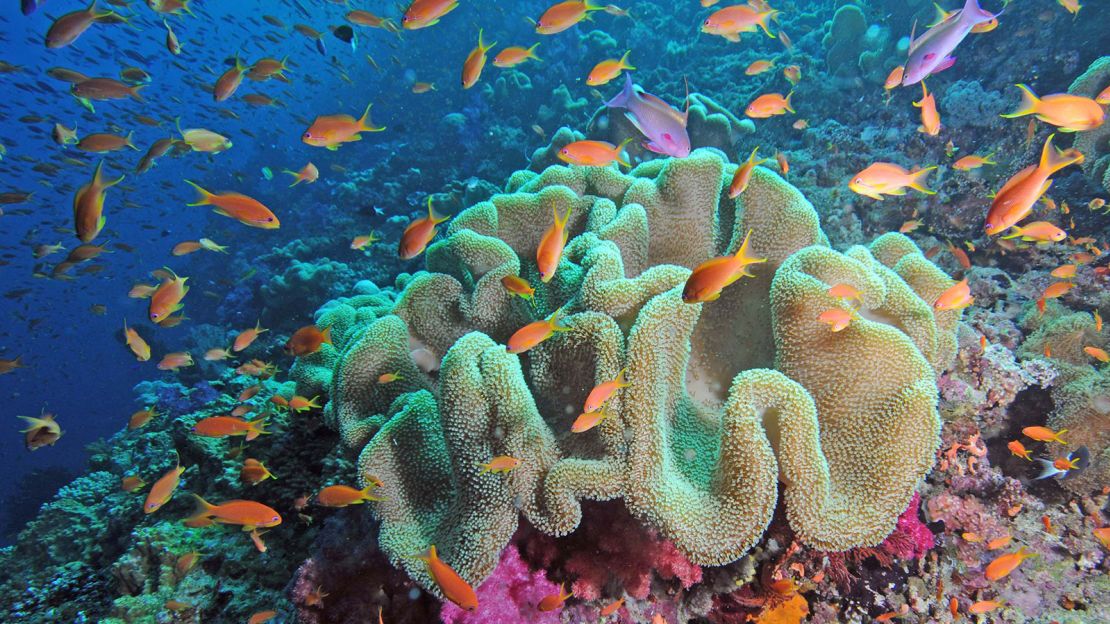
Close your eyes and imagine a tropical Pacific resort. Qamea is it.
Green, jagged, volcanic mountains rising in the background. Sweeping white sand beaches framed by ridiculously blue waters.
A collection of luxury thatched Fijian bures, or huts, with private swimming pools and Jacuzzis, set among coconut palms on 100 acres of lush tropical gardens. Oh, and the South Pacific’s only Guinot-branded spa.
The resort serves a maximum of 34 adults in 17 opulently appointed bures – all air conditioned and with outdoor showers.
Guests can can stroll to the beach and snorkel out to extraordinary reefs without breaking a sweat.
Underwater, Fiji has long been a celebrated dive kingdom. Waterproof cameras will be overloaded at the legendary Rainbow Reef on nearby Taveuni Island where many of Fiji’s 200-plus soft corals are on display in Technicolor.
Fiji has extensive wall diving, ripping drift dives at Somosomo Strait and more than 1,000 fish species to take in.
2. Misool Eco Resort (Indonesia)
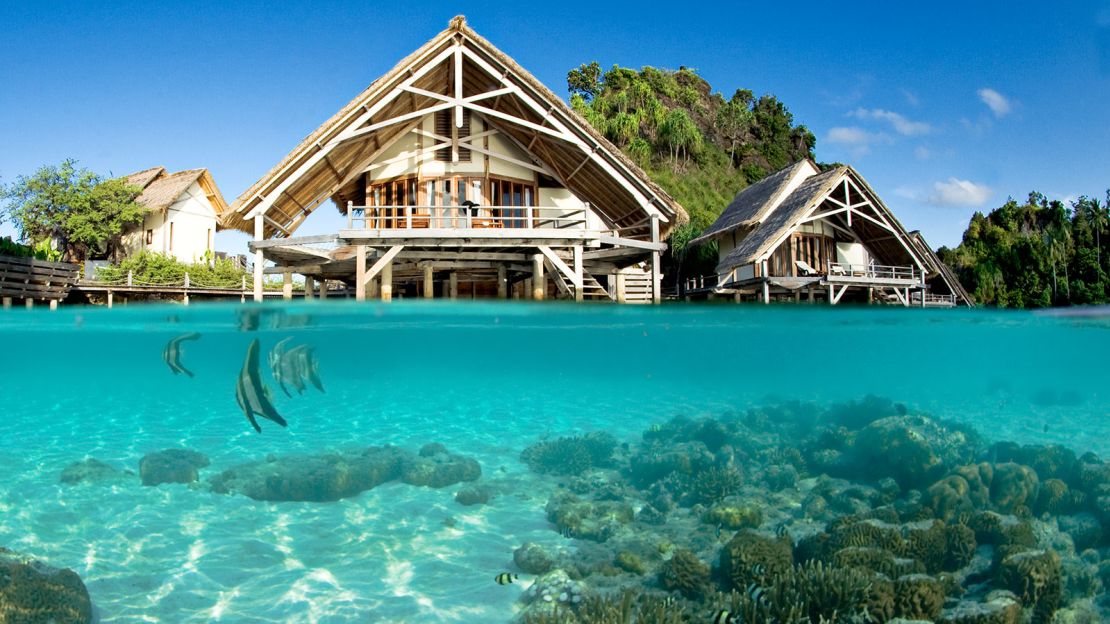
The very definition of remote, Misool Eco Resort is a private island inside a 465-square-mile Marine Protected Area that’s surrounded by an 18,000-square-mile shark and manta sanctuary.
The resort is hidden deep in an archipelago of uninhabited islands more than 100 miles from the closest port and 12 miles by boat from the nearest village.
It’s in the heart of the Coral Triangle, so named because it’s home to a majority of the world’s reef-building corals in the diving Mecca of southern Raja Ampat.
Guests can stay in the extravagant Water Cottages and snorkel or dive around the pilings of their lodge. There are also beach lodgings.
The resort proudly boasts three staff for each one of their 40 guests. Staying at Misool Eco may be good for the soul but guests will also be supporting its conservation initiatives.
The resort was directly responsible for getting the Indonesian government to create the Raja Ampat Shark and Manta Sanctuary.
Perhaps most impressive is the 320-square-mile No-Take Zone where all fishing and marine harvesting is prohibited.
Best luxury liveaboard dive boats
3. Kia Ora Resort & Spa (Rangiroa, French Polynesia)
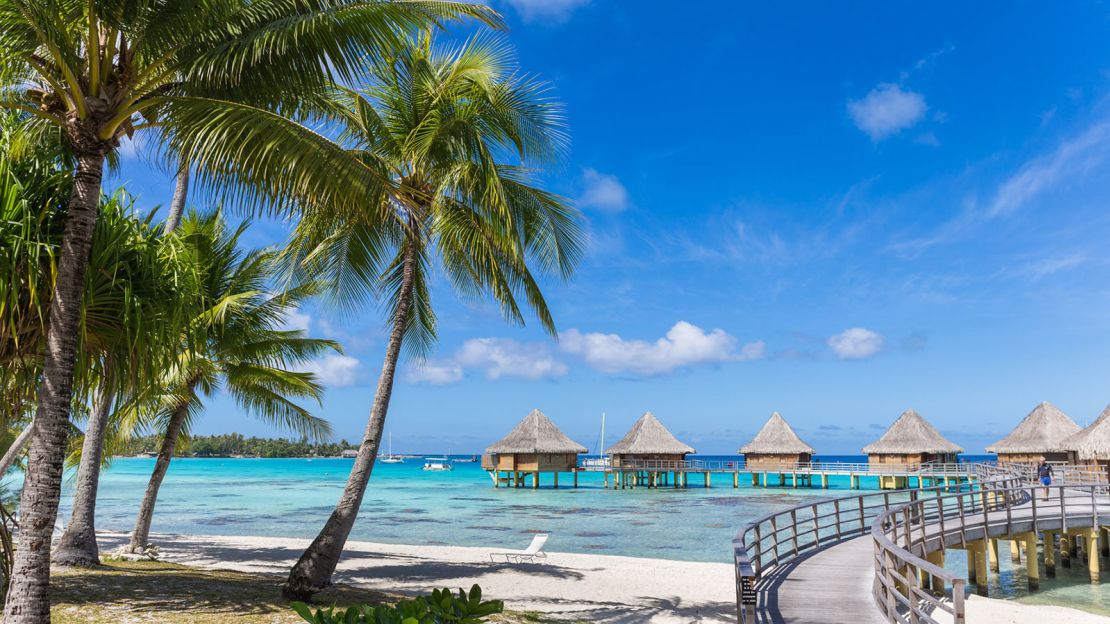
Rangiroa is your everyday, run-of-the-mill, mind-blowing coral atoll about 350 miles away from everything – more specifically, in Tahiti.
Anyone expecting to find world-class diving will find world-class diving.
For shark lovers, there’s daily action as well as friendly dolphins not scared off by even the most awkward divers.
This is a perfect location for newbie divers, who can stay within the shallow confines of the atoll, as well as more aggressive bubble-blowers who want to venture into the blue looking for big critters dressed in gray.
Kia Ora offers two lavish resorts in one.
The main property has 60 luxury waterfront villas and bungalows on the beach or overlooking the lagoon.
Or there’s Le Sauvage, the resort’s private island just an hour’s boat ride away for 10 guests who want to become one with Polynesian nature.
4. Jade Mountain (St. Lucia)
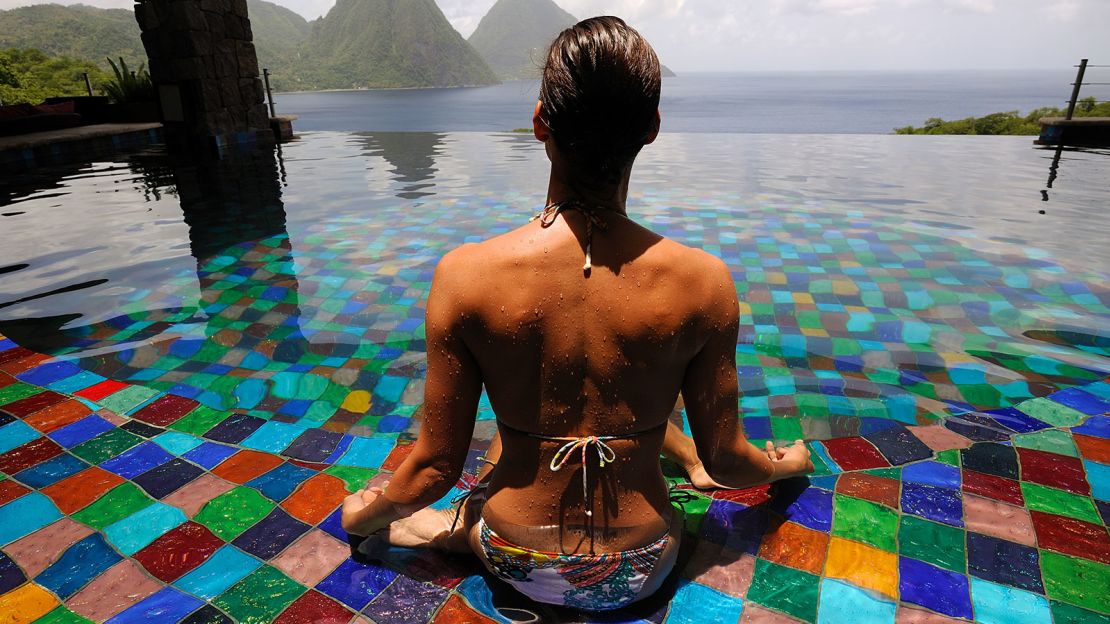
The extreme vertical architecture of this resort mirrors St. Lucia’s famously steep Gros and Petit Piton mountains.
Architect-owner Nick Troubetzkoy employed bridges, towering columns and balconies to blend into the natural surrounding.
The results are sprawling views of the Caribbean Sea and the sky-scraping green Pitons that rise proudly out of Soufriere Bay.
At Jade Mountain, living areas have just three walls.
The fourth has been replaced with a private infinity pool and an expansive view that gives “open air” a whole new meaning.
The resort looks down over St. Lucia’s Marine Park, where both beach and boat dives are easily accessible. The island’s marine ecosystem is home to more than 100 species of fish and most diving is in the 20- to 130-foot range.
The rocky underwater terrain is full of multicolored sponges and corals and a favorite hangout of peacock flounders, octopus, needlefish, lobsters, moray eels and other typical Caribbean fish.
Turtle sightings are frequent.
5. Lizard Island (Australia)
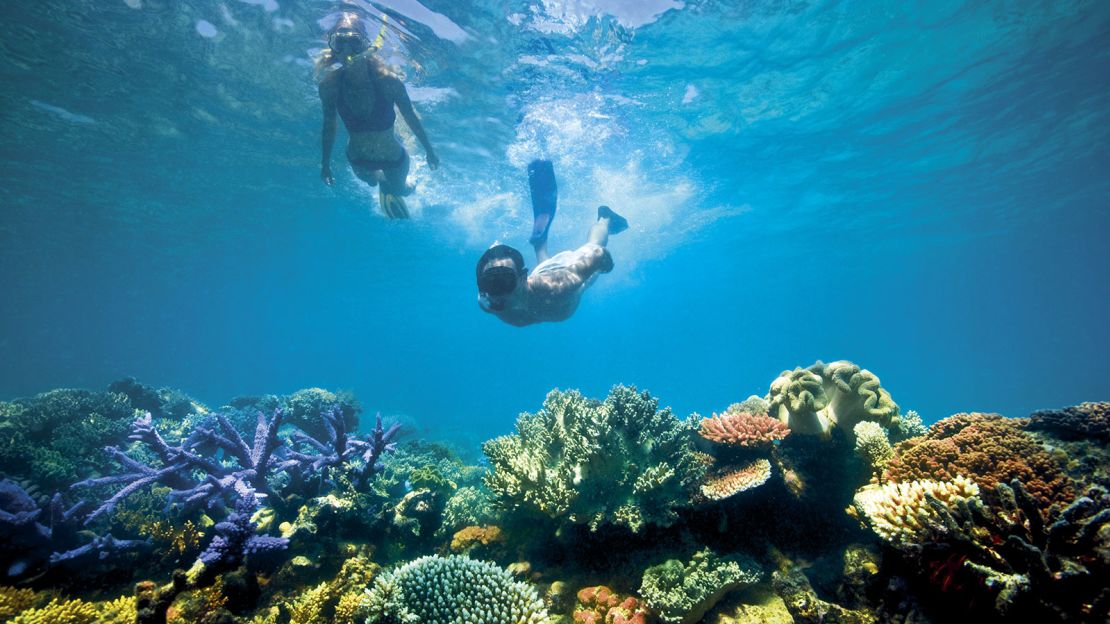
Lots of people mistakenly believe that the Great Barrier Reef has the world’s best diving.
Not true … Unless you seek out the correct sites along the 1,500-mile ecosystem.
Lizard Island is one of those gems.
The island resort is in a 2,500-acre national park and offers world-class diving and snorkeling right off the beach.
It’s also near Cod Hole, possibly Australia’s best-known dive site, where golf-cart-sized but friendly potato cod (think giant grouper) hang out in gangs.
The resort has just 40 exquisite rooms and suites complete with aromatherapy oil burners, air conditioning and every possible amenity imaginable.
Guests look out over a white crescent beach and pale blue water leading directly to the GBR.
An admirable aspect of Lizard Island’s community service is the coral reef research facility operated by the Australian Museum.
Researchers have produced more than 1,200 scientific publications since the station was founded in 1973.
6. Mnemba Island (Tanzania)
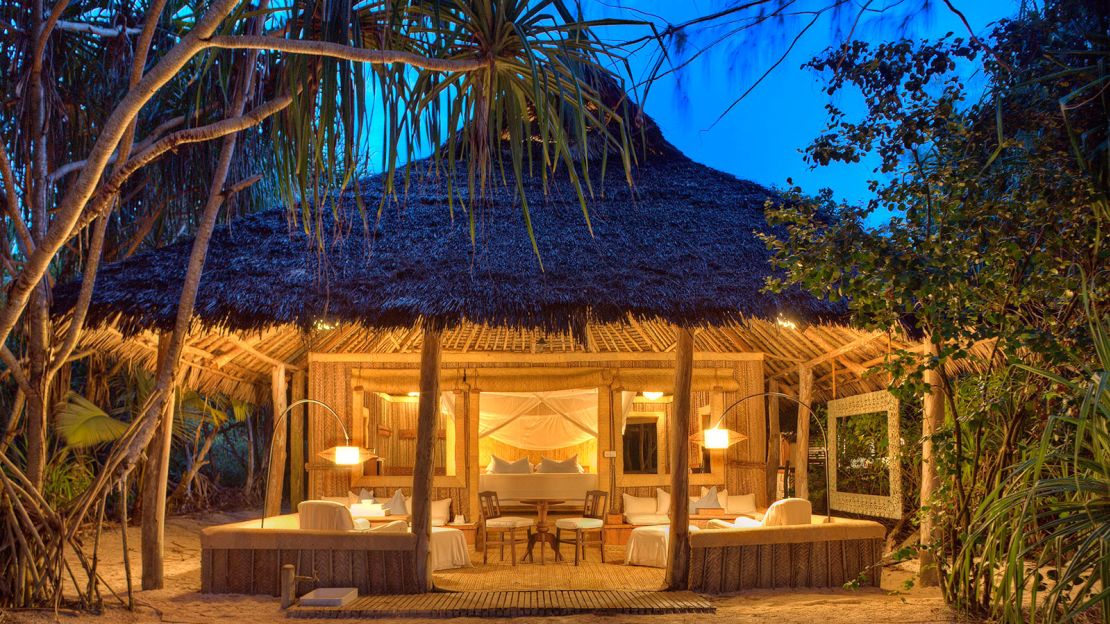
This is as remote as it gets. Getting there involves hitting Tanzania, Africa, then flying to Stone Town on the island of Zanzibar.
After a drive across Zanzibar, it’s a two-mile boat ride out to Mnemba Island.
Once there, visitors will be among only 20 guest in 10 traditional but high-end beachside bandas.
It’s a small island, but guests can snorkel, fly fish, kayak, dive, test out the nearest hammock or just eat the palate-pleasing cuisine and beverages served by friendly staff.
The island is a nesting ground for endangered green sea turtles.
Divers might encounter migrating humpback whales, dolphins, sharks, rays, barracuda, mackerel, kingfish, sailfish and marlin.
Jenny Collister, who owns of Reef & Rainforest, Dive & Adventure Travel, boasts that Mnemba is “one of the only places in the world where you can dive tropical waters and go on safari on the same luxury vacation.”
Underwater ‘Star Trek’: Drifting in the dark off Hawaii
7. Four Seasons Landaa Giraavaru (Maldives)
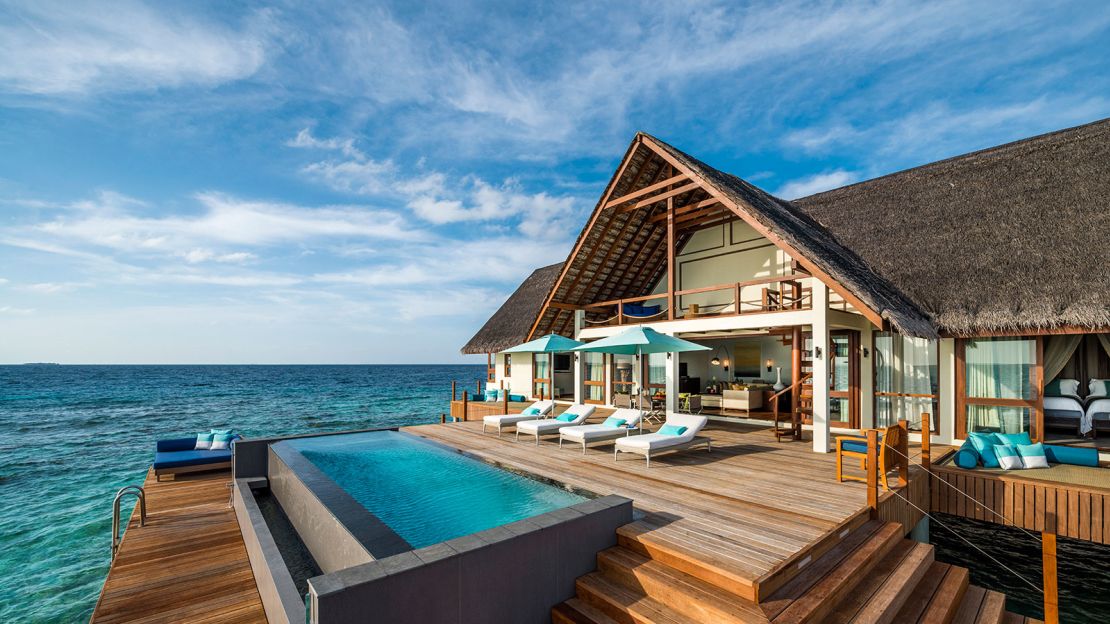
Built in a contemporary Maldivian design, the Landaa Giraavaru resort has 103 suites and villas directly on the beach or perched on stilts over the lagoon allowing guests to trip off the deck right into the warm Indian Ocean.
The Water Villas have floor-to-ceiling windows, private pools, massive sundecks, outdoor showers and nets over the water for taking a nap to the sound of the sea.
For the truly spoiled, there’s the uber-luxe three-bedroom, 2,000-square-foot Landaa Estate with its private 250-foot beach.
The resort takes advantage of the Maldives’ myriad white beaches and strategically places cushy sofas and tents where guests can chill out by the water with cold drinks and gourmet snacks.
For diving, the top billing in the Maldives is mingling with whale sharks and mantas. These gentle beasts swoop in to feed on plankton at places like Bathala and Hanifaru Bay.
There are enormous populations of butterflyfish, oriental sweetlips, white tip reef sharks, hammerheads, eagle rays and the ever-weird-looking Napoleon wrasse.
8. Crusoe Island Lodge (Chile)
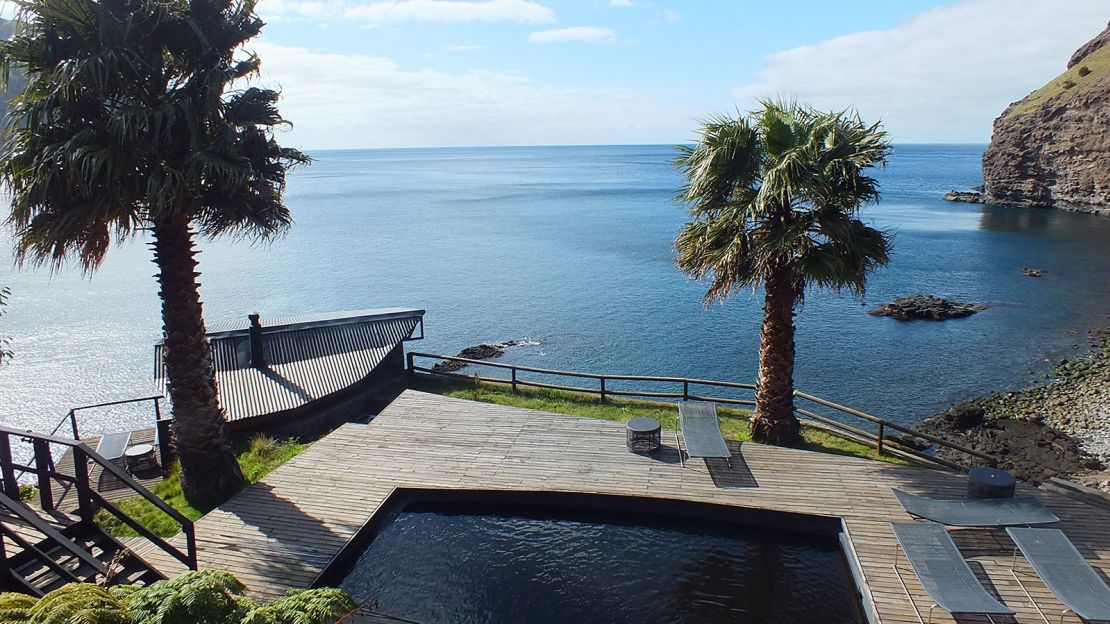
Once called Mas a Tierra, this rugged landmass was renamed Crusoe Island because of its famous castaway, Alexander Selkirk, who spent four lonely years here from 1704 to 1708.
He’s said to have inspired Daniel Defoe’s novel “The Adventures of Robinson Crusoe.”
More than 200 years later, the island still isn’t so easy to access, but the digs are considerably nicer.
Remote and luxurious, Crusoe is 420 miles offshore from Chile and is reached by a prop airplane followed by a 30-minute boat ride.
The lodge and accommodations were built with recycled materials and wood from a nearby forest.
There’s a spring-fed pool, a firewood-heated hot tub and full bar, a five-star restaurant and spa – all for just 30 special guests.
Divers are treated to more than 400 species of fish, abundant lobsters and octopi and a prolific population of curious dive-bombing fur seals.
The water is chilly – barely reaching 70 F in summer – so a full wetsuit is necessary.
A highlight is a German light cruising ship, the Dresden, that was scuttled during World War II and has become a popular dive site.
The resort also offers horseback riding, bird watching, sport fishing, island trekking and optional afternoon napping.
9. Petit St. Vincent (St Vincent)

Anyone with 56 very close friends (Facebook doesn’t count) can book what Petit St. Vincent calls a “full island buyout.”
That reserves all of this 115-acre island’s 22 one-bedroom cottages and two-bedroom beach villas.
The homes are scattered along the bluffs and seven perfect beaches, ensuring privacy even among good friends, just in case anyone needs some alone time.
For diving, Jacques Cousteau’s son, Jean-Michel, has made Petit St. Vincent a kind of second home.
The dive school bears his name and follows the Cousteau legacy of exploration and conservation.
Dozens of excellent dive sites are minutes away or just a few miles north around Union and Mayreau Islands.
Besides Sail Rock, which is reserved for advanced diving when weather conditions allow, most of the diving is easy enough for beginners.
Divers will encounter moray eels, lobsters, nurse sharks, sea fans, colorful sponges and corals in typically warm, clear Caribbean water.
10. North Island (Seychelles)
This “camp” is run by Wilderness Safaris but don’t be fooled by the name. How many camps have a gym, a presidential villa with flat screen TVs and a library?
The resort is comprised of 11 opulent, hand-crafted villas overlooking the azure Indian Ocean.
Their dining room, lounge and swimming pool are built into a massive rock outcrop with a spectacular view that’s vintage Seychelles: tropical, hilly, rocky, beachy and expansive blue sky and sea. The resort is appointed with sumptuous furnishings, exquisite woodwork and an open-air atmosphere that’s limited to only a couple of dozen guests.
About a mile wide and a little more than a mile long, the hilly, oval shaped island has paths for jogging, strolling or riding the bikes that come with each villa.
There are also electric buggies for exploring the island in comfort while enjoying a cool beverage.
North Island is one of the Seychelles legendarily picturesque inner islands.
Their credo of the 4 Cs – commerce, conservation, community and culture – promotes environmental projects, children’s education and a variety of community-based programs.
For divers, North Island is fringed in hard and soft corals, sea fans and vibrant sponges. Multicolored nudibranchs slug along while spotted eagle rays, parrotfish, round ribbontail rays and white-tip reef sharks do their thing.
Barracuda, wahoo, sailfish and seasonal whale sharks make this a diver’s paradise.
Fred Garth is a 30-year journalist and editor of adventure travel magazines. He’s served as editor of Fathoms, Scuba Times and Skin Diver magazines. He’s currently editor in chief of Guy Harvey Magazine.

















